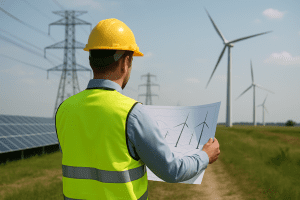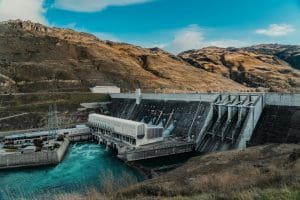New Zealand Microgrids: The Future of Resilient and Sustainable Energy in Aotearoa

Contents
What is a Microgrid?
A microgrid is a localised, self-sufficient energy system that can operate independently or in parallel with the main power grid. It typically integrates a combination of renewable energy sources—such as solar panels and wind turbines—with battery storage, backup generators (often diesel or natural gas), and intelligent control systems.
These systems work together to ensure reliable energy delivery. When the main grid goes down, microgrids can “island” themselves, continuing to operate independently and providing power where it’s needed most.

Planning – energy consideration for New Zealand Microgrids
Why Microgrids Matter for New Zealand
With its unique geography and remote communities, New Zealand is well-positioned to benefit from microgrid technology. From rural marae and coastal settlements to urban campuses and industrial zones, microgrids offer customisable solutions for energy independence.

New Zealand Microgrids Energy- Hydroelectric Dam
1. Energy Resilience in Emergencies
As extreme weather events become more common, the resilience of the traditional grid is increasingly tested. Microgrids provide a safeguard against outages, keeping power flowing during storms, earthquakes, or equipment failures. This is critical for hospitals, emergency response centres, and other essential services.
2. Sustainable Power for a Low-Carbon Future
New Zealand has committed to achieving net-zero carbon emissions by 2050. Microgrids contribute directly to this goal by enabling the integration of renewable energy. By reducing reliance on fossil fuels and maximising the use of solar, wind, and hydro resources, microgrids help shrink carbon footprints and support sustainability initiatives.
For example, Shape Energy partners with businesses across Aotearoa to install hybrid microgrid systems that blend solar PV, wind turbines, and smart battery storage. These systems not only reduce emissions but also lower long-term energy costs.
3. Energy Independence for Remote and Rural Communities
Many isolated or off-grid communities face high energy costs and unreliable service. Microgrids empower these communities with local control over their energy resources. This reduces dependence on diesel shipments and long transmission lines, making energy access more affordable and consistent.
4. Smarter Energy Management
Modern microgrids use advanced software and control systems to balance supply and demand in real-time. This means they can prioritise renewable energy when available, store excess power for later use, and reduce strain on the main grid. Businesses benefit from reduced peak-demand charges and improved operational efficiency.
Real-World Applications of New Zealand Microgrids
Microgrids can be tailored to meet the needs of a wide range of sectors:
-
Healthcare: Hospitals and aged care facilities can maintain continuous power to life-saving equipment.
-
Education: Universities and schools can reduce costs and act as community hubs during emergencies.
-
Industry: Manufacturing plants and logistics hubs can protect against costly production downtime.
-
Agriculture: Farms can power irrigation, refrigeration, and processing facilities off-grid.
-
Public Infrastructure: Local councils can keep water treatment plants, traffic systems, and communication networks running during outages.
How Shape Energy Delivers Microgrid Solutions
At Shape Energy, we specialise in designing and implementing microgrid systems that fit your unique energy needs. Our solutions are built around New Zealand’s renewable strengths, incorporating solar, wind, hydro, and battery technologies supported by robust control platforms.
Whether you’re looking to reduce costs, improve sustainability, or ensure energy continuity, our team can assess your site, design a customised microgrid, and provide end-to-end project management.
The Future of New Zealand Microgrids
As technology advances, microgrids are becoming more intelligent and affordable. With tools like AI-driven energy forecasting, real-time analytics, and automated load balancing, microgrids are no longer just a backup solution—they’re a proactive step toward a more resilient and sustainable energy future.
For New Zealand microgrids represent a smart investment in energy sovereignty and environmental stewardship. With the country’s abundant renewable resources and growing appetite for energy innovation, now is the time to explore microgrid solutions.
Contact Us
Interested in building energy resilience with a microgrid?
Contact the experts at Shape Energy today to find out how we can help you harness the power of local, renewable energy—no matter where in Aotearoa you’re based.

